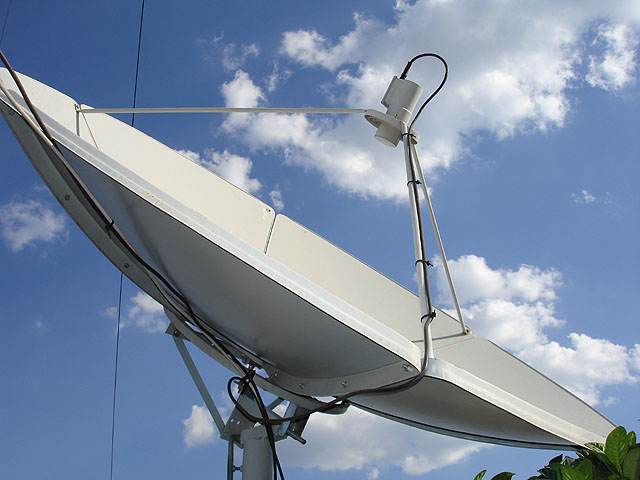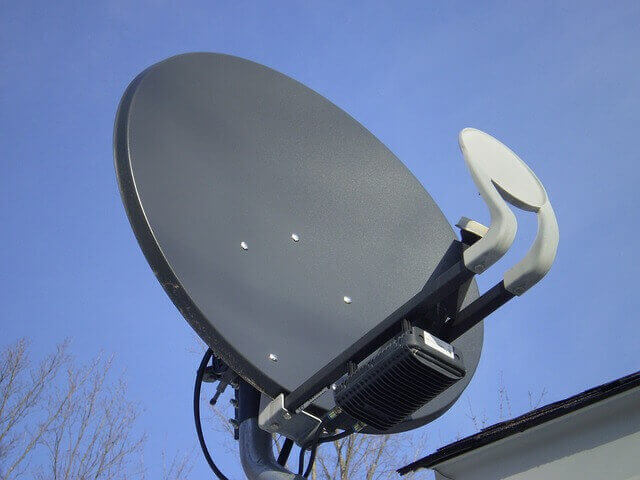
Probably you reside in a rural area and also you can’t obtain cord or DSL high-speed Web access, yet you can obtain satellite. Or, perhaps you go to your wit’s end with the cable television and/or phone (DSL) business and don’t wish to provide either of them another cent. Satellite may be the response, yet you’ll need to do a little bit of research prior to figuring out if it will fit your demands. Below are solution to most of the most common inquiries regarding satellite solution.
Q: Just how rapid is satellite gain access to?
A: Satellite suppliers commonly supply numerous degrees of service with download speeds ranging between 700 Kbps and also 1.5 Mbps as well as upload speeds as high as 256 Kbps. Keep in mind, though, that these are optimal rates. Normal rates, especially throughout peak times, can be somewhat slower.
Q: How much does satellite accessibility cost?
A: The rate depends on your carrier and the solution plan that you acquire. As a generalization, costs range from roughly $60 a month for solution supplying roughly 700 Kbps download and install speed to around $80 a month for solution in the 1.5 Mbps array. Furthermore, your devices costs can be as much as $300 or $400 and setup can set you back an additional $200, although suppliers commonly have special offers for devices as well as installment.
Q: What effect can weather carry satellite accessibility?
A: As is the case with satellite tv, severe rain or snow can reduce or stop satellite Web access. That holds true both for poor weather condition in your area as well as poor climate at the location of the satellite carrier’s network procedures facility (NOC). Nevertheless, while severe climate can damage the connection, satellite systems typically run even in strong, consistent downpours.
Q: Besides the weather, how trustworthy is satellite access?
A: Besides solution degradation as a result of weather, satellite gain access to is extremely reputable. The outdoor equipment is fairly sturdy as well as, while it does break down occasionally, such problems are unusual.
Q: Still, should I maintain a dial-up link “just in case?”
A: While it is alluring to keep a dial-up link due to the facility technical nature of satellite connections, it isn’t essential for the majority of people. As mentioned above, the satellite devices is really robust and rarely breaks down and weather-related troubles take place rarely. If something does go incorrect, it can take days before fixing employees can obtain to your house. If that problems you, you might want to have a dial-up back-up yet understand that you’ll seldom, if ever before, use it.
Q: What tools is called for?
A: Satellite gain access to calls for installation of two tools. Outdoors is a meal that gathers and also transmits the signal to and also from the satellite. Inside is a “satellite modem” that is connected to the dish using coax. The modem is connected to a COMPUTER or to networking devices such as a router utilizing an Ethernet wire.

Q: Is any kind of on-going upkeep called for?
A: Although nothing is outright, usually, no on-going maintenance is needed. On uncommon events, you will require to have your meal “re-peaked,” or re-aimed at the satellite. A lot more seldom, there will be a tools failure and some part of the system such as the receiver, transmitter or modem, will need to be replaced. As discussed over, the devices is fairly sturdy and also such issues are uncommon.
Q: Can I network my satellite connection so that more than one computer in my home can have gain access to?
A: The satellite systems can be networked the same as DSL or wire connections. That is to claim, you can connect the indoor satellite modem to a router making use of a standard Ethernet cable, which then distributes the link to various other computers. Keep in mind, however, that the satellite suppliers will not help you set up or repair house networks.
Q: What is latency and also exactly how will it influence me?
A: Latency is the moment required for a signal to travel from its source to its location. When it comes to satellite gain access to, that includes the time it requires to send out the signal up to a satellite and pull back to the ground. Given that satellites generally orbit regarding 22,000 miles above the planet, that latency can be as long as a second every single time information is sent out as well as received.
That delay indicates that particular types of applications aren’t sensible when making use of satellite systems. One notable example is voice-over-IP. Over a satellite link, a 2nd or more passes in between the time you state something and the time it is heard, that makes communications clumsy. Satellite links likewise aren’t helpful for supposed “jerk” real-time on-line games and also for use with incurable server software, which allows telecommuters attach to their company’s servers as if they remained in the workplace.
Q: The number of satellite carriers exist?
A: In the U.S., there are three key satellite suppliers: HughesNet (www.hughesnet.com), WildBlue (www.wildblue.com) and Starband (www.starband.com). Other suppliers and organizations may offer satellite service, however it commonly is offered by one of the 3 services. AT&T supplies satellite service however actually is reselling WildBlue solution.
Q: Does it matter where I mount the meal?
A: The recipe needs to have a clear sight of the southerly sky, which is where the satellite is in orbit. Past that, the meal can be placed utilizing a post stuck into the ground, on the side of your residence or on your roofing system. Obviously, a ground-mounted recipe is much easier in case upkeep is called for. In some cases snow and ice collecting on the dish can slow down solution– it is simpler to comb snow and ice off a ground-mounted recipe.
Q: Can I set up satellite service by myself?
A: No– satellite accessibility suppliers won’t let you do that. And that’s most likely an advantage because it requires certain skills to connect the dish to the right satellite. Additionally, the Federal Communications Compensation needs that professionals set up satellite systems that both send out as well as receive signals.

Q: Just how does satellite service run in real use? Is it different than making use of cable television or DSL?
A: Other than limitations on a few certain kinds of applications mentioned previously, satellite solution operates essentially identically to DSL or cable broadband.
Q: I live in the city. Are there any kind of factors to take into consideration satellite accessibility?
A: In many cases, DSL or wire accessibility is faster and also cheaper. If that sort of solution is available to you, opportunities are high that it will be more effective to satellite accessibility.
Q: Is satellite gain access to two-way accessibility?
A: Yes. Information that you obtain, such as downloaded documents as well as Website, is sent using the satellite system, as are things you post. Early satellite systems, nevertheless, were one-way systems. Downloads happened via the satellite yet information sent out by you was sent by means of a typical dial-up link. Such old-fashioned systems have not been offered for numerous years.
Q: I’m a Mac customer. Can I use satellite accessibility?
A: Yes. All significant satellite access systems work with Macs.
Q: Is mobile satellite accessibility offered?
A: No. A satellite connection calls for a constant connection with a satellite that is in high orbit. It is a taxing task for an experienced installer to intend your meal at that satellite. While some companies have been trying out antennas that can keep a link with the satellite while a car moves, this modern technology isn’t yet sensible for day-in, day-out usage.
Q: I also get satellite TV. Can I utilize just one recipe for both?
A: No. While single dish solutions once were readily available, suppliers figured out that different recipes work much better for both Net Service as well as TELEVISION.
Q: Can I download and install as high as I want over a satellite system?
A: No. Like various other broadband providers, satellite suppliers have Fair Gain access to Plans (FAP) that detail just how much you can download and install at a given time. The objective of the FAP is to prevent a few hefty downloaders from hogging data transfer used by everybody. Satellite suppliers have a tendency to have more stringent FAPs than other broadband companies. As an example, with HughesNet you can download as high as 350 MB each time, relying on your service plan. That is roughly one-third the size of a normal downloadable feature-length flick. When you go beyond the restrictions of the FAP, the company has the option of momentarily strangling down your rate.
You are worthy of to obtain the most out of your solutions, whether it’s high-speed Net, phone, cable television, or HDTV. Digital Touchdown is here to aid, making it easy to find out every little thing you need to find out about digital solutions for your residence.
